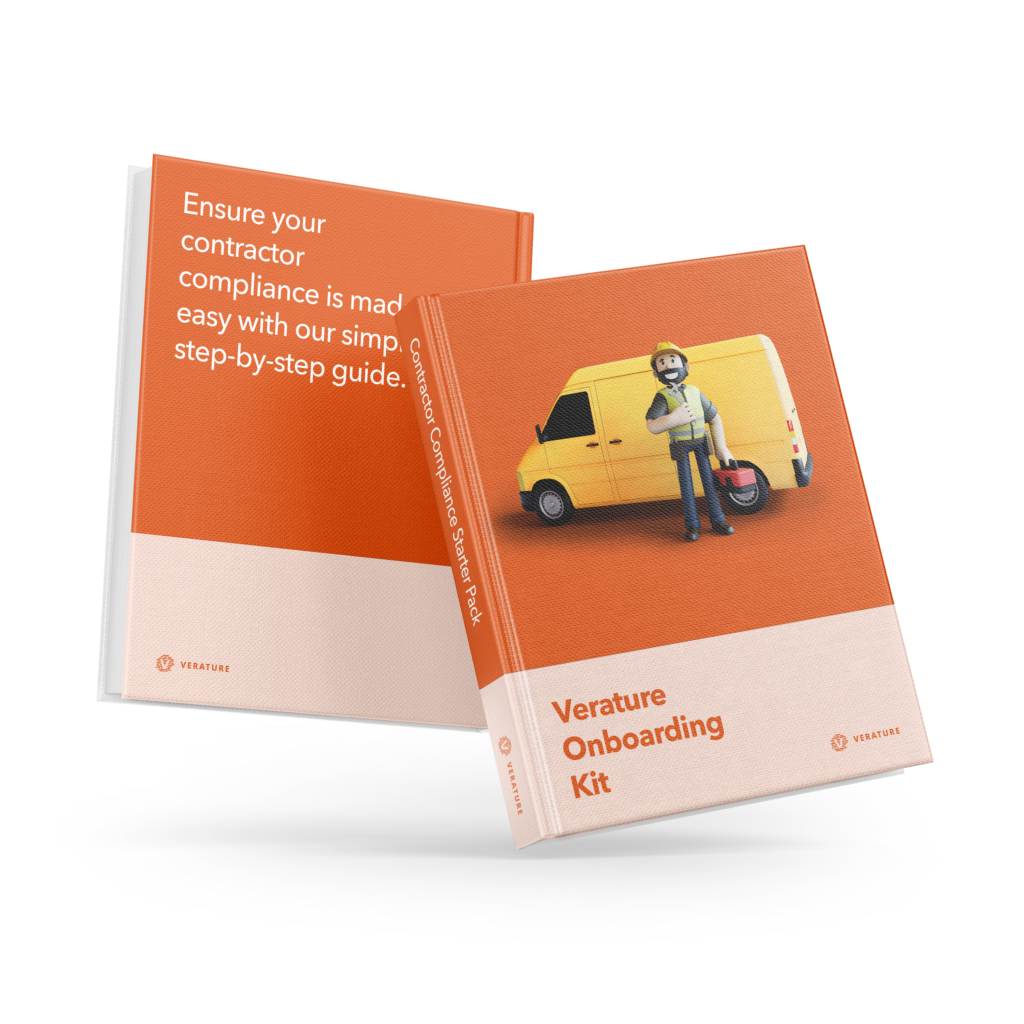- Why Verature?Find out why Verature is the best system for continuous contractor compliance.
- Arrive, Work & Stay Safe
- Removes Paper & Spreadsheets
- Tracks Key Contractors
- Instant 360 Visibility
- Contractor Management Dashboards
- Why Contractor Management Software
- Our Customer Reviews
- Pricing
We don’t hide behind fancy sales teams before we tell you, our prices.- Clients
See who we are working with and what they have to say about Verature.- Resources
Check out our blog, useful guides, whitepapers and product videos.- Prequalification and Induction Guide
- Contractor Compliance Guide
- Mini-Audit your Permit to Work System
- Health and Safety Audit Checklist
- Resource Library
- Blog
Book a demo
What Should Be Included in a Contractor Induction?
Site inductions are needed on every construction site, for every worker. It’s the law. High-risk environments, and the information you include in your induction could be the difference between a safe site, or an accident waiting to happen. Everyone who works for you needs to know how to work safely and without risks to health. As a business you must provide clear instructions and information, and adequate training, for your employees.
A contractor induction is an introduction to a new site or project. The main objective of inductions is to inform contractors and workers of the key facts they need to know when arriving on your site. A site induction is only suitable if it contains the health and safety information workers need to know. Inductions typically includes.
- who to report to
- what to do on arrival
- what they need
- what to watch out for
- what to do if things go wrong
- what to do when they leave.
It is a legal requirement that every worker should have a suitable site induction on every construction site or high-risk sites they work on. But what information goes into a suitable site induction? And what makes a site induction ‘suitable’?
Here are eight kinds of information you should give your team before they start work on a new site for the first time.
Who oversees what, and who is in charge of who?
Provide information about the management of the site from day one. Site management details ensures your contractors know who to report to and who takes responsibility for what on site. They need to know who the site manager is, who the first aiders are, supervisors, fire marshals etc.
What type of work is happening on the site?
Project details tell your contracts what and where the type of work is happening on site, as well as make them aware of any other work that is happening on site that could be a danger. Remember some of your team may have just been sent to do one specific job, but they must still know what else is happening around them to ensure they can work safely
Restricted access and site-specific risks?
As stated, it is important to provide information about other types of work on your site that could be a risk, as your contractors may understand the risks associated with their own activities, but are there any unusual site-specific risks they should be aware of? Are any parts of the site out of bounds or restricted access?
Rules are not there to be broken.
Setting and informing contractors of your site rules enables you to create a safe site. Contractors need to know about your site rules before and while they are on site to abide by them. Your contractors and workers need to know what they can do and what they cannot do. The site induction is the perfect place to explain which rules apply to the site.
What procedures do they need to follow?
Every site will have procedures in place. For safety, organisation, and progress of the work. Signing in, security measures, permits, accident reporting, PPE, hearing protection zones, housekeeping etc. Maybe there is a specific shut down procedure. Maybe there is a time and place for toolbox talks or safety briefings each day. Make sure your workers know what is expected of them.
How is your site laid out?
Each site is different. And, just to add complications, construction sites change throughout a project. The layout may need to be altered and adapted as buildings come down and go up. Familiarise your contractors with the site at the induction session. Identify welfare facilities, canteen, first aid provisions, traffic routes, escape routes, firefighting equipment etc. If things change, update your workers and contractors during safety briefings.
Meetings and briefings
Ensure you have constant communication with your workers and contractors. It should start with an induction, but do not let it end there. Let your contractors know when there are planned training, safety and other site meetings might be held. Getting your contractors involved enables you to outline procedures always, and continually.
There is no such thing as a stupid question
It is always important to allow time for questions and feedback during the induction, as well as questioning you contractor about what they have seen in your induction. They or you might have missed something, or not explained something clearly so it is important to ensure the information in your induction process has been understood so things do not go wrong on site. You can use this feedback to add and change your induction, so it is better next time. You’ll need to deliver inductions throughout the project as new people join, so you can keep improving it.
When your team knows what to do, and what to expect, everyone can work safer, together.
Businesses have a duty of care for their employees, visitors, and contractors when they are on site, with that duty they have a wealth of data that needs managing to ensure a compliant safety culture.
Digital innovations are providing a variety of solutions for businesses to drive real value and performance; Our Verature Contractor Compliance Systems is providing new ways of handling and interacting with your contractors that arrive onto your sites. Communicating and building relationships with contractors, and your internal staff has never been more convenient and easier.
If you would like to learn more about keeping your workforce safe at work, and implementing contractor inductions in your contractor management process, contact us today at Verature to discuss our contractor compliance system.
Book a demoFind out if you’re ready with our Verature Onboarding Kit
Not sure if Verature is right for you? We understand it’s not easy to make a decision on a new system, but that’s why we’ve created our Onboarding Kit to make that that process simple.
Check our package details
Find out no matter what package you choose, you’ll be getting the best features you need for you and your team so you can have continuous contractor compliance.
Make it your own
You’ll get to see and choose your customisation options, and check out the available add-ons and extras so the system is exactly what you want and need.
Quickly getting you started.
Keeping this guide with you, and working closely with us, we can walk you through each step so you can be completely up and running with your own Verature system.
More reasons to use Verature
It’s easy to get started.
Step 1
Book a demo of Verature with the team.
Step 2
We’ll chat through your requirements and see if Verature is right for you.
Step 3
We’ll send you demo access and our onboarding kit to help you decide what you need.
Step 4
You decide if we’re right for you. No pushy sales calls.
Step 5
Like what you see and hear? Let’s get you onboarded with Verature!








